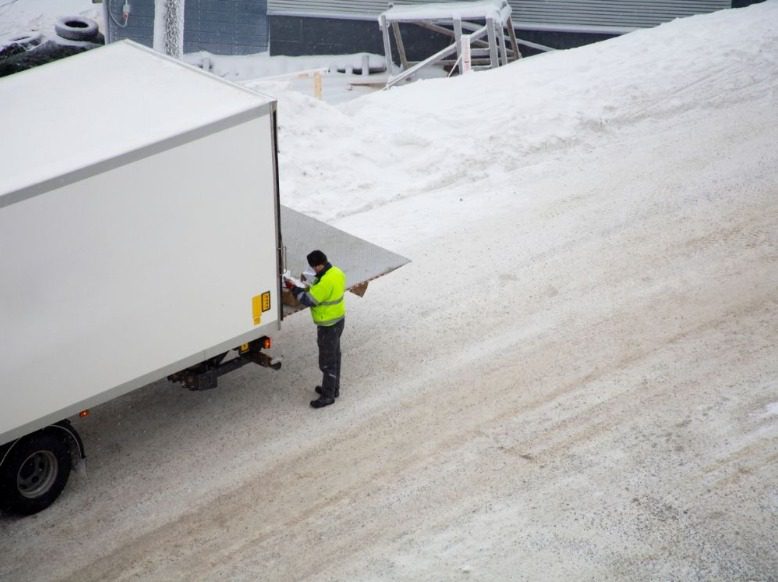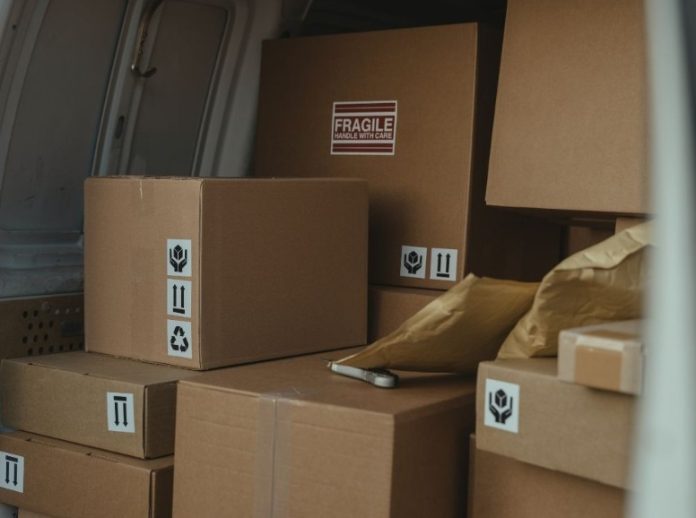Home deliveries are something most of us can’t imagine our lives without.
We expect every online store, every retailer, and every restaurant to offer speedy, flexible, and affordable home delivery services.
Some do it in-house, i.e. by means of a team of full-time or part-time drivers that operate a fleet of commercial vehicles owned by the business.
Some choose to outsource deliveries to a third party like DHL, UPS, or Uber.
Either way, behind every home delivery is a well-oiled last mile logistics machine. Depending on how well it’s set up, customers either get a 5-star delivery service or a disappointing experience.
This article is all about last mile logistics: what it is, how it works, and how it can drive business growth in 2022 and beyond.
What is last mile logistics?
Last mile logistics or last mile delivery is the final step of order fulfillment – transportation of goods from a store or warehouse directly to the customer’s doorstep.
Last mile logistics is often referred to as the last leg of any supply chain.
A package can come a long way: from suppliers to production facilities to distribution centers and, finally, to retail stores.
Yet the final step of the supply chain is what’s visible to the customer. Therefore, planning and executing home deliveries is a whole industry of last mile logistics software.
Let’s take a closer look at the key challenges and solutions in any last mile delivery process.
Last mile logistics challenges
Last milt logistics is no different from transportation and logistics at large because it deals with the same challenges: supply chain disruptions, driver shortage, gas prices, and ever-rising costs.
However, the big difference between last mile delivery and transportation management as a whole is that last mile has to be transparent for the customer.
Hence the requirement to be customer-centric – something all delivery businesses work towards.
Without further ado, let’s take a brief look at the main challenges associated with last mile logistics.
Supply chain disruptions
Supply chain disruptions is something the transportation industry has endured all throughout the pandemic.
Cargo plans stuck in lockdown, suppliers going out of business, and many, many safety restrictions that significantly slow down order fulfillment for many businesses.
For last mile logistics, this meant irregular stock, delayed shipments, and the need to speed up all other processes as a way to make up for poorer customer experience.
Driver shortage
Driver shortage is the age-old logistics problem.
High turnover, no-shows, and inconsistent performance are some of the issues every logistics manager is way too familiar with.
Especially seeing how driver onboarding takes time, safety and compliance need to be ensured, and performance needs to be measured – there’s a lot of moving parts when it comes to truck driver management.

Fuel costs
You don’t need to be in last mile logistics to know that gas prices can hurt a business significantly.
In times when fleet electrification is still not as wide-spread as we’re led to believe, logistics managers need to come up with ways to cut mileage and navigate gas prices.
Otherwise you’re in for operations costs incompatible with long-term growth.
Visibility
Last mile visibility is what separates last mile logistics from transportation at large.
That’s because the end customer is involved in the process without necessarily having the expertise to assess the efficiency of a logistics process.
For the end customer, everything needs to be simple. Customers want to know when and how their packages arrive, and they want to monitor delivery progress.
Sustainability
Sustainability is a hot topic in 2022, and the industry of last mile logistics is no exception.
In fact, it’s the transportation industry that takes a hit when it comes to measuring carbon emissions and offsetting the carbon footprint.
Electrification is one way out of this. Another is being paperless and future-proof in terms of delivery services that you provide.
Now that we know of the biggest challenges of last mile logistics, let’s explore the tried and tested solutions used by the world’s largest logistics operations.
Last mile logistics solutions
The good news about last mile delivery challenges is that many software vendors as well as logistics operations have come up with reliable solutions to them.
These solutions not only help logistics operations mitigate the damage but power consistent business growth. Let’s review some of them.
Route optimization
Gone are the days when logistics managers sat down to manually plan delivery routes for multiple drivers and vehicles.
Automated, AI-powered route planning and optimization are the staples of any successful logistics operation.
The idea is simple: use an algorithm that plans and optimizes routes in seconds based on vehicle capacity, order details, driver time, any any restrictions.
Thanks to route optimization, delivery operations can plan routes in seconds and instantly dispatch jobs to drivers in the field.
Driver apps
Instant dispatch, navigation, package scanning, and even Proof of Delivery (e-signature and/or photo proof) is impossible without mobile apps for delivery drivers.
While there any many driver apps for different purposes, the most efficienct solutions are all-in-one applications integrated with a web dashboard.
This way a manager can build and dispatch routes that the driver sees on their mobile app right away.
The same app can work for navigation, QR/barcode scanning, delivery confirmation, and internal communication.
Last mile tracking
Real-time tracking is the backbone of last mile visibility. To remain customer-centric, tracking needs to be available both to dispatchers and customers.
The best last mile logistics solutions provide real-time tracking together with live estimated time of arrival (ETA).
When both of these are in place, customers receive delivery notifications, track their packages in real-time, and get a positive experience with the delivery service.
Last mile visibility is crucial for B2B delivery too. Transparency eliminates the need to call and ask about the status of the order, not to mention clear expectations and execution.
Digitalization
If there’s one way to future-proof your last mile logistics, it is through digitalization.
Paperless, contactless, and carbon-neutral deliveries is something logistics operations are embracing more and more. Sustainable means consistent and successful.
The sooner you can get started with e-signatures and photos as electronic Proof of Delivery (ePOD), the further you future-proof your logistics operation.
The good news is that all it takes to go paperless and contactless is last mile logistics software.
With so many vendors on the market, you can find your perfect solution and confidently grow your business one delivery at a time.
Wrapping up
Last mile logistics is a good business to be in because the world needs home deliveries.
What’s important, however, is to know common challenges and solutions to last mile delivery issues – because the latter powers real business growth.
I hope this article gives you insight into last mile logistics as a key part of any supply chain.
About the Author
 Yulia Miashkova is a Content & SEO Manager with Track-POD. Track-POD delivery software is the trusted provider of ready-to-use solutions to last mile logistics challenges.
Yulia Miashkova is a Content & SEO Manager with Track-POD. Track-POD delivery software is the trusted provider of ready-to-use solutions to last mile logistics challenges.



































